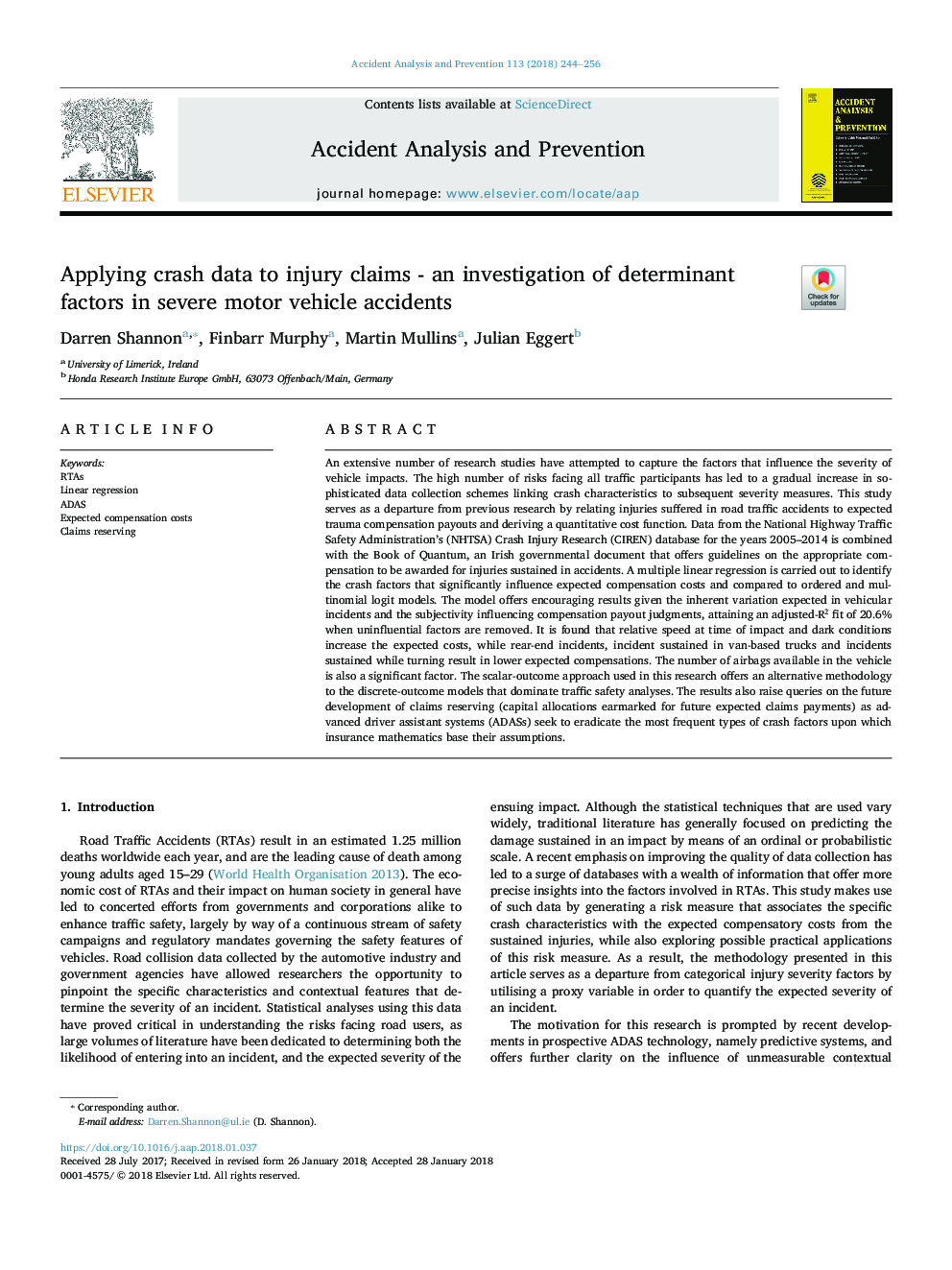| Article ID | Journal | Published Year | Pages | File Type |
|---|---|---|---|---|
| 6965215 | Accident Analysis & Prevention | 2018 | 13 Pages |
Abstract
An extensive number of research studies have attempted to capture the factors that influence the severity of vehicle impacts. The high number of risks facing all traffic participants has led to a gradual increase in sophisticated data collection schemes linking crash characteristics to subsequent severity measures. This study serves as a departure from previous research by relating injuries suffered in road traffic accidents to expected trauma compensation payouts and deriving a quantitative cost function. Data from the National Highway Traffic Safety Administration's (NHTSA) Crash Injury Research (CIREN) database for the years 2005-2014 is combined with the Book of Quantum, an Irish governmental document that offers guidelines on the appropriate compensation to be awarded for injuries sustained in accidents. A multiple linear regression is carried out to identify the crash factors that significantly influence expected compensation costs and compared to ordered and multinomial logit models. The model offers encouraging results given the inherent variation expected in vehicular incidents and the subjectivity influencing compensation payout judgments, attaining an adjusted-R2 fit of 20.6% when uninfluential factors are removed. It is found that relative speed at time of impact and dark conditions increase the expected costs, while rear-end incidents, incident sustained in van-based trucks and incidents sustained while turning result in lower expected compensations. The number of airbags available in the vehicle is also a significant factor. The scalar-outcome approach used in this research offers an alternative methodology to the discrete-outcome models that dominate traffic safety analyses. The results also raise queries on the future development of claims reserving (capital allocations earmarked for future expected claims payments) as advanced driver assistant systems (ADASs) seek to eradicate the most frequent types of crash factors upon which insurance mathematics base their assumptions.
Related Topics
Physical Sciences and Engineering
Chemical Engineering
Chemical Health and Safety
Authors
Darren Shannon, Finbarr Murphy, Martin Mullins, Julian Eggert,
